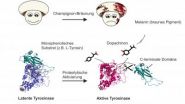(Press-News.org) Fairfax, Va., September 9, 2014—Radiation therapy with concurrent paclitaxel chemotherapy following surgery is an effective treatment for patients with high-risk endometrial cancer, according to a study published in the September 1, 2014 edition of the International Journal of Radiation Oncology ● Biology ● Physics (Red Journal), the official scientific journal of the American Society for Radiation Oncology (ASTRO).
Endometrial cancer is the most common gynecologic malignancy. Patients with early-stage disease are typically treated with surgery alone; however, patients with advanced endometrial cancer have higher instances of local or distant recurrence. Concurrent radiation therapy and chemotherapy after surgery is used to reduce the rate of recurrence in patients with advanced disease. This study, "A Phase 2 Trial of Radiation Therapy With Concurrent Paclitaxel Chemotherapy After Surgery in Patients With High-Risk Endometrial Cancer: A Korean Gynecologic Oncology Group Study," evaluates the efficacy and toxicity of concurrent chemoradiation with weekly paclitaxel in patients with stage III and IV endometrial cancer.
From January 2006 to March 2008, 57 patients from 20 institutions in Korea were included in the study. Patients eligible to participate in the study were between 20 and 80 years old, with a histologic diagnosis of International Federation of Gynecology and Obstetrics (FIGO) stage III or IV endometrioid adenocarcinoma with no history of prior surgery, chemotherapy or radiation therapy for the treatment of other cancers. Patients with diagnoses of other cancers or severe infection requiring parenteral antibiotics, with a history of cardiac arrhythmia, congestive heart failure or myocardial infarction within the previous six months, or with uncontrolled infection, diabetes, hypertension or compromised cardiac, renal, liver or bone marrow functions were not included in the study. Of the 57 patients in this study, 12 patients (21.1 percent) had FIGO stage IIIA disease, 40 (70.1 percent) had FIGO stage IIIC disease and five (8.8 percent) had FIGO stage IV disease. Fourteen patients (24.6 percent) had grade 1 tumors, 27 (47.3 percent) had grade 2 tumors, and 16 (28.1 percent) had grade 3 tumors. The average age of the study patients was 52.2 years old.
All eligible patients had a staging laparotomy, including total abdominal hysterectomy, bilateral salpingo-oophorectomy (removal of both ovaries and both fallopian tubes), pelvic and para-aortic lymphadenectomy and peritoneal washing cytology. Patients in the study received a total dose of 45.0 to 50.4 Gy of external pelvic radiation therapy (1.8 to 2.0 Gy daily, five times a week), and 60 mg/m2 of paclitaxel diluted in 500 mL of 5 percent dextrose in water administered intravenously for three hours, once a week, for six weeks. Radiation therapy and chemotherapy were initiated within six weeks of surgery, and radiation therapy began either two days before or two days after the first chemotherapy treatment.
Chemotherapy was suspended due to adverse toxic effects in two patients. Of those two patients, one experienced septic shock, and one had persistent grade 4 neutropenia (an abnormally low count of neutrophils, a type of white blood cell) for more than two weeks. One patient refused treatment after enrollment, and two patients withdrew from treatment prior to completing all six cycles of chemotherapy. Fifty-two patients were included in the study's final analysis.
Patients received follow-up for five years after surgery. Chest X-ray and abdominal-pelvic CT or MRI were conducted every six months for the first two years post-surgery and then annually for the next three years. Patients were also evaluated by pelvic examinations, monitoring CA125 blood serum levels and Papanicolaou tests every three months for the first two years post-surgery and then every six months for the next three years.
Severe toxicities observed during treatment were primarily hematologic toxicities. Of the 312 treatment cycles (52 patients each received six cycles), 52 episodes (16.7 percent) of grade 3 or 4 leukopenia (decrease in number of white blood cells) were observed, and 35 episodes (11.2 percent) of grade 3 or 4 neutropenia were observed. Hematologic toxicity caused 98 cycles to be delayed one week, and a paclitaxel dose reduction was required for eight patients (15.3 percent) who experienced persistent neutropenia for more than one week.
Disease recurrence occurred in 19 (36.5 percent) of the 52 patients in the final analysis. Eighteen patients (34.6 percent) experienced extrapelvic recurrence (lung, liver, bone, para-aortic, lymph node or other sites). One patient (1.9 percent) had intrapelvic recurrence in the vaginal vault. The median time to the detection of recurrence was 12 months (range 3 to 24 months).
Survival data was available for all 52 patients included in the analysis. By the end of the five-year follow-up period, nine patients (17.3 percent) had died of endometrial cancer. For all patients included in the study, the five-year disease-free survival rate was 63.5 percent (95 percent Confidence Interval (CI)), and the overall survival rate was 82.7 percent (95 percent CI).
"There is a lack of clear evidence on the best adjuvant treatment plan for patients with advanced endometrial cancer. There is growing evidence that chemotherapy should be administered to patients with advanced disease in addition to radiation therapy," said Jae-Hoon Kim, MD, PhD, a co-author of the study, head of the department of obstetrics and gynecology at Gangnam Severance Hospital in Seoul, South Korea, and a professor in the Department of Obstetrics and Gynecology at Yonsei University College of Medicine in Seoul, South Korea. "This study shows that concomitant radiation therapy and weekly paclitaxel chemotherapy is a reasonable treatment option for patients with advanced endometrial cancer that can reduce toxicity and reduce pelvic recurrence. These favorable results should be further evaluated in a larger, prospective, randomized, controlled study to validate this treatment approach."
INFORMATION:
For a copy of the study manuscript, contact ASTRO's Press Office at press@astro.org. For more information about the Red Journal, visit http://www.redjournal.org.
ABOUT ASTRO
ASTRO is the premier radiation oncology society in the world, with more than 10,000 members who are physicians, nurses, biologists, physicists, radiation therapists, dosimetrists and other health care professionals that specialize in treating patients with radiation therapies. As the leading organization in radiation oncology, the Society is dedicated to improving patient care through professional education and training, support for clinical practice and health policy standards, advancement of science and research, and advocacy. ASTRO publishes two medical journals, International Journal of Radiation Oncology • Biology • Physics and Practical Radiation Oncology; developed and maintains an extensive patient website, http://www.rtanswers.org; and created the Radiation Oncology Institute, a non-profit foundation to support research and education efforts around the world that enhance and confirm the critical role of radiation therapy in improving cancer treatment. To learn more about ASTRO, visit http://www.astro.org. END
RT and concurrent chemotherapy after surgery is effective treatment for high-risk endometrial cancer
Phase II trial results from the Korean Gynecology Oncology Group
2014-09-09
ELSE PRESS RELEASES FROM THIS DATE:
PP&AR sets national agenda for long-term care
2014-09-09
The number of Americans needing long-term care — also called long-term services and supports (LTSS) — is projected to more than double to 27 million by 2050. Approximately 70 percent of people over the age of 65 will rely on some form of LTSS for an average of three years. The latest issue of Public Policy & Aging Report (PP&AR) lays down a policy prescription for a sustainable system of LTSS in the U.S., using the Federal Commission on Long-Term Care's 2013 final report as its foundation.
With support from The SCAN Foundation, the issue presents nine articles under ...
Why do mushrooms turn brown?
2014-09-09
This news release is available in German.
The research team of Annette Rompel from the Institute for Biophysical Chemistry, University of Vienna explore the mechanisms behind the "browning reaction" during the spoilage of mushrooms. The researchers were able to demonstrate that the enzyme responsible is already formed prior to fungal spoiling. The detailed study is published online in the well renowned journals, Phytochemistry and Acta Crystallographica.
Understanding the mechanism of enzyme tyrosinase pigmentation is currently of both medical as well as technological ...
Growth factors found in breast milk may protect against necrotizing enterocolitis
2014-09-09
Philadelphia, PA, September 9, 2014 – Necrotizing enterocolitis (NEC) is a devastating gastrointestinal illness affecting up to 10% of premature infants, with a 30% mortality rate, and formula feeding has been identified as a risk factor for NEC. A study published in The American Journal of Pathology found that growth factors present in human breast milk, but not in formula, may explain the protection against intestinal damage. Further, supplementing the diet of newborn NEC-affected rodents with these growth factors promotes epithelial cell survival.
"NEC is a highly ...
A weekly text message could encourage healthier food choices, new study shows
2014-09-09
Many people are unaware that the U.S. Food and Drug Administration's mandated nutrition labels are based on a 2,000-calorie-a-day diet, but a simple weekly text message reminder can greatly improve that awareness, according to a new study from the Johns Hopkins Bloomberg School of Public Health.
While not an outright recommendation, the 2,000-calorie benchmark is what the FDA considers a reasonable daily calorie intake for many adults. More importantly, nutrition labels on food products sold in the U.S. are based on it.
The key to translating nutrition labels and ...
The saplings go their own way
2014-09-09
This news release is available in German. Leipzig. In tropical rainforests, most young trees grow spatially independent from their parent trees. This means that it is not possible to predict where seedlings will take root, and less specialised species therefore have an advantage even in the species-rich rainforests of the tropics. This is the finding of a study, conducted by researchers at the Helmholtz Centre for Environmental Research (UFZ), the University of California and the Smithsonian Tropical Research Institute, the results of which were published recently in ...
Study sheds light on asthma and respiratory viruses
2014-09-09
People with asthma often have a hard time dealing with respiratory viruses such as the flu or the common cold, and researchers have struggled to explain why.
In a new study that compared people with and without asthma, the answer is becoming clearer. The researchers found no difference in the key immune response to viruses in the lungs and breathing passages. The work, at Washington University School of Medicine in St. Louis, suggests that a fundamental antiviral defense mechanism is intact in asthma. This means that another aspect of the immune system must explain the ...
Weakness in malaria parasite fats could see new treatments
2014-09-09
A new study has revealed a weak spot in the complex life cycle of malaria, which could be exploited to prevent the spread of the deadly disease.
It found female malaria parasites put on fat differently to male ones.
"The study opens potential new ways to combat malaria," said Associate Professor Alexander Maier, from The Australian National University Research School of Biology.
"Malaria parasites show resistance to all current anti-malarial drugs. We are losing our weapons against this very important disease. But by studying lipid molecules – fats – rather than ...
Eating is addictive but sugar and fat are not like drugs, study says
2014-09-09
People can become addicted to eating for its own sake but not to consuming specific foods such as those high in sugar or fat, research suggests.
An international team of scientists has found no strong evidence for people being addicted to the chemical substances in certain foods.
The brain does not respond to nutrients in the same way as it does to addictive drugs such as heroin or cocaine, the researchers say.
Instead, people can develop a psychological compulsion to eat, driven by the positive feelings that the brain associates with eating.
This is a behavioural ...
New methods enhance the quality of myocardial perfusion imaging
2014-09-09
New methods that enhance the quality of myocardial perfusion imaging were developed in a recent study completed at the University of Eastern Finland. In her PhD study, Tuija Kangasmaa, Lic. Phil., invented a method which makes it possible to reduce the imaging time by up to 50%, making the scan session easier for the patient. Furthermore, the study also created two additional methods which correct errors resulting from patient movement during the scan. The methods were validated and they have already been taken into use in hospitals all over the world.
Coronary artery ...
New infrared marker for bio-imaging
2014-09-09
Far-red shifted fluorescent tissue markers make it possible to visualize structures and processes with advanced bio-imaging. This permits new insights into organisms and creates the potential for a wide range of applications – from more exact delineation of tumor and metastasis through to tracking drug responses within whole-body imaging.
The team of scientists headed by Dr. Ulrike Schoetz, Dr. Nikolas Deliolanis, Dr. Wolfgang Beisker, Professor Horst Zitzelsberger und Randolph Caldwell from the Helmholtz Zentrum München have succeeded in developing novel fluorescent ...
LAST 30 PRESS RELEASES:
Making lighter work of calculating fluid and heat flow
Normalizing blood sugar can halve heart attack risk
Lowering blood sugar cuts heart attack risk in people with prediabetes
Study links genetic variants to risk of blinding eye disease in premature infants
Non-opioid ‘pain sponge’ therapy halts cartilage degeneration and relieves chronic pain
AI can pick up cultural values by mimicking how kids learn
China’s ecological redlines offer fast track to 30 x 30 global conservation goal
Invisible indoor threats: emerging household contaminants and their growing risks to human health
Adding antibody treatment to chemo boosts outcomes for children with rare cancer
Germline pathogenic variants among women without a history of breast cancer
Tanning beds triple melanoma risk, potentially causing broad DNA damage
Unique bond identified as key to viral infection speed
Indoor tanning makes youthful skin much older on a genetic level
Mouse model sheds new light on the causes and potential solutions to human GI problems linked to muscular dystrophy
The Journal of Nuclear Medicine ahead-of-print tip sheet: December 12, 2025
Smarter tools for peering into the microscopic world
Applications open for funding to conduct research in the Kinsey Institute archives
Global measure underestimates the severity of food insecurity
Child survivors of critical illness are missing out on timely follow up care
Risk-based vs annual breast cancer screening / the WISDOM randomized clinical trial
University of Toronto launches Electric Vehicle Innovation Ontario to accelerate advanced EV technologies and build Canada’s innovation advantage
Early relapse predicts poor outcomes in aggressive blood cancer
American College of Lifestyle Medicine applauds two CMS models aligned with lifestyle medicine practice and reimbursement
Clinical trial finds cannabis use not a barrier to quitting nicotine vaping
Supplemental nutrition assistance program policies and food insecurity
Switching immune cells to “night mode” could limit damage after a heart attack, study suggests
URI-based Global RIghts Project report spotlights continued troubling trends in worldwide inhumane treatment
Neutrophils are less aggressive at night, explaining why nighttime heart attacks cause less damage than daytime events
Menopausal hormone therapy may not pose breast cancer risk for women with BRCA mutations
Mobile health tool may improve quality of life for adolescent and young adult breast cancer survivors
[Press-News.org] RT and concurrent chemotherapy after surgery is effective treatment for high-risk endometrial cancerPhase II trial results from the Korean Gynecology Oncology Group


